Best relief pitchers of all time: The best relievers in MLB history
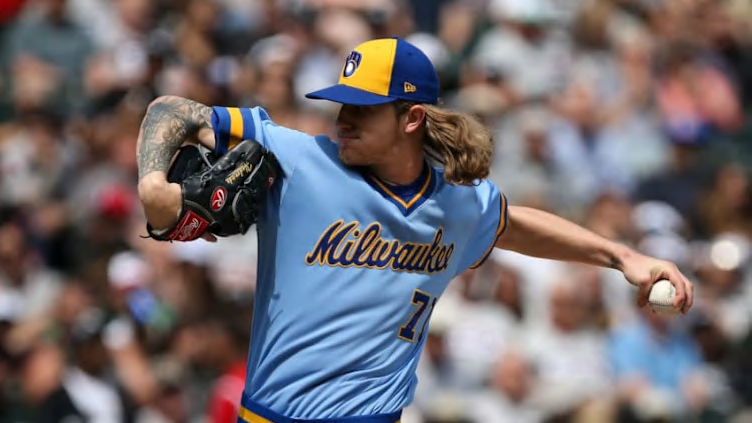
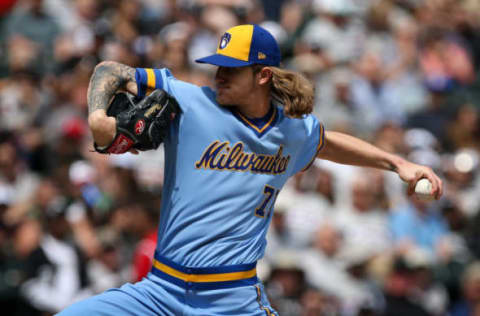
Though the position has been expanded heavily recently, a list of the best relief pitchers in MLB history would include pitchers from multiple decades back. Who makes our list?
As part of a series we will cover here at Call to the Pen on MLB history, today we will look at the best relief pitchers of all time.
We will cover all of MLB history, not just the first 100 years or the last 50 years, and this is not a consensus of all Call to the Pen authors and editors, but the opinion of the author of that list. This is a great list to debate and discuss!
Before we move to the top 20, let’s look at one current player who has a chance to break into this top 20 list!
Josh Hader, LHP
Career Stats: 62 G, 7 SV, 88 1/3 IP, 1.73 ERA, 0.88 WHIP, 11.24 BB%, 43.79 K%
A local guy from the Baltimore area, Hader was elated to be picked by his local squad in the 19th round in the 2012 draft, but after a pair of trades that first took him to Houston and then to Milwaukee, Hader has emerged with a chance to be the most dominant reliever of his era.
While other pitchers have had dominant runs over a short time, none have had dominance near what Hader has been doing so far. Hader’s strikeout rate really should be put in some level of perspective.
Thus far in 2018, Hader has thrown 40 2/3 innings, with a 16/80 BB/K ratio. That equates to a 53.33% strikeout rate. In the history of the game, two pitchers have ever recorded over a 50% strikeout rate in a season with more than 40 innings pitched. Hader leads all by almost a full percentage point with the highest strikeout rate ever seen in the history of the game with at least 40 innings thrown.
That isn’t selection bias. If you lower the standards to 35 innings, he’s still the top of the list. Same with 30 innings, 25 innings, 20 innings, 15 innings, and even 10 innings. You have to set the minimum to 5 innings pitched in a season to find any pitcher in the history of the game who has had a strikeout rate higher than what Hader is doing in 2018 – and Hader’s still #2!
The temptation will be heavy for the Brewers to put Hader into the rotation with his 3-pitch mix, but he’s so dominant in his current role that it will be hard to move him.
While we wait to see if Hader will eventually join the best relief pitchers of all time, let’s take a look at the guys who do make the list…
Next: 25. A 32nd round find

25. Robb Nen, RHP
Career Stats: 643 G (4 GS), 314 SV, 715 IP, 2.98 ERA, 1.21 WHIP, 8.72 BB%, 26.58 K%
In 1987, the Texas Rangers took a lanky righty from a California high school in the 32nd round. He chose not to go to college and to sign with the Rangers. He was a solid starter, but an arm injury led to a move to the bullpen, and after he was traded to the then-Florida Marlins during their inaugural season, Robb Nen became a dominant reliever.
Nen took over as the closer for the Marlins mid-way through the 1994 season, and he saved 35 games in the 1997 season as the Marlins surprised all of baseball and stormed to their first championship. He saved 4 games that postseason, the first of 11 postseason saves of Nen’s career with a stellar 2.25 ERA over 20 postseason innings.
The Marlins tore down that 1997 team nearly as soon as the last fan had cleared the stadium in game 7, and Nen was no exception. He was traded to the Giants for a trio of prospects.
In San Francisco, Nen would develop his dominant reputation, saving 40 games 4 times in 5 seasons with the Giants and finishing with an ERA under 2 twice. Nen was selected to 3 All-Star games as a Giant. Interestingly, in his best season, the only season he got Cy Young and MVP votes, Nen did not make the All-Star game.
Nen was dominant in 2002 as the Giants worked through the playoffs all the way to the World Series. He pitched so much along the way for the Giants that he ended up aggravating a torn rotator cuff that he had been pitching with for some time, extending the tear through up to 75% of the muscle. He would never pitch again, though he did try for two seasons to rehab and return to the game.
Nen’s short spurt of dominance and retirement at 32 meant that when he came up for the Hall of Fame, he simply didn’t have the numbers to push the needle, garnering less than 1% of the vote in 2008. However, his presence on the mound could not be denied.
Next: 24. The Terminator
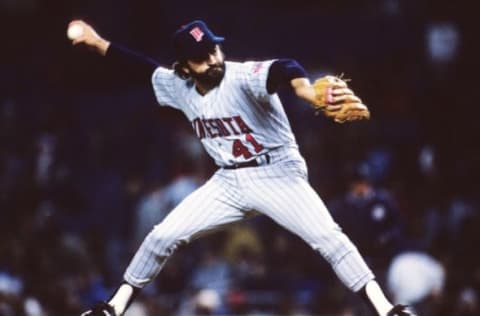
24. Jeff Reardon, RHP
Career Stats: 880 G, 367 SV, 1,132 1/3 IP, 3.16 ERA, 1.20 WHIP, 7.58 BB%, 18.58 K%
Certainly used to the cold weather, the Montreal Expos drafted Reardon in the 23rd round in 1973 out of high school in Massachusetts. He chose to attend the University of Massachusetts Amherst, and he went undrafted, eventually signing with the New York Mets as an undrafted free agent in 1977 and pushing through the system quickly, reaching the majors in 1979, using his blazing upper 90s fastball and intimidating presence on the mound to establish himself as a very effective reliever.
The Expos acquired Reardon in the midst of the 1981 season, and they installed him as the closer by the end of the season. In 1982, he saved 26 games, and he continued doing well, before bumping up his save numbers in 1985 to a league-leading 41 in 1985, making his first All-Star team. He made another All-Star game in the following season, but he struggled in the second half, resulting in a 3.94 ERA.
The Minnesota Twins acquired Reardon to be their closer in the offseason before 1987, and he’d end up the key point of a bullpen that found itself in the World Series that season. Reardon struggled in the ALCS, something that he’d done in 1981 with the Expos as well, but he sparkled in the World Series, pitching 4 scoreless appearances as the Twins won the title.
Reardon had another All-Star year in 1988 for the Twins, with a career-high 42 saves, but in 1989, he posted a 4.09 ERA. After the 1989 season, Reardon hit the free agent market and signed with his hometown Red Sox, having another All-Star year in 1991. However, the powerful fastball that had been Reardon’s signature for years had begun to slow a tick, and he was never able to develop a secondary pitch that was consistent for him, so when his fastball dipped, he was done.
Reardon chose to spend time with his family rather than going into coaching after his career was over, but he has had some rough personal times as he’s struggled to recover after his son committed suicide in 2004, falling into a deep depression. He was able to make an appearance at the Twins’ 30th anniversary celebration of their 1987 team, and he has committed to therapy and seeking the help to get back on track.
Reardon was only on the ballot for one season, but he fell off the Hall of Fame ballot with just under the minimum 5% to remain on the ballot.
Next: 23. Tigers relief ace
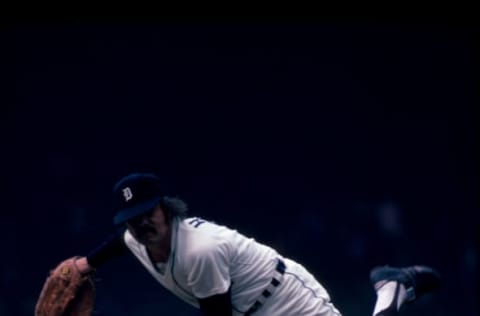
23. John Hiller, LHP
Career Stats: 545 G (43 GS), 125 SV, 1,242 IP, 2.83 ERA, 1.27 WHIP, 10.28 BB%, 19.9 K%
A Canadian, born in Toronto, Hiller signed with the Tigers in 1963 and broke in at the major league level in 1965. He quickly established himself as one of the toughest left-handed relievers in the league and was viewed during his career as one of the best relief pitchers that had pitched in the game.
Incredibly, Hiller suffered a heart attack in 1971 and missed the entire season, but he came back to record some of the most dominant relief seasons in MLB history from 1973-1978, when he averaged 52 games pitched and 114 innings thrown, with a 2.45 ERA, 1.24 WHIP, and a 50/108 BB/K during that six-year dominant run. He would set an American League record for saves in 1973 with 38 that would not be broken for a decade.
What is incredible about Hiller’s career is that after his heart issues, he seemed to thrive in the most pressure-packed situations, pitching his best when he was being pushed against the wall, sometimes seeming to put a man or two on base just to help his own focus.
Hiller was widely considered the best relief pitcher of all-time from the left side by many until the mid-80s brought along a handful of guys that will appear later on this list. His 1973 season earned him 4th place votes both in the Cy Young and MVP, his highest placement in both awards of his career. He would make just one All-Star game, in 1974.
Sadly, when he had his name on the Hall of Fame ballot in 1986, it was in an era where relievers were highly undervalued for the Hall of Fame, and he received just 2.6% of the vote, failing to remain on the ballot.
Next: 22. K-Rod
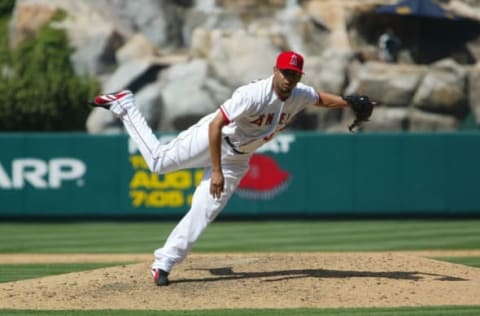
22. Francisco Rodriguez, RHP
Career Stats: 948 G, 437 SV, 976 IP, 2.86 ERA, 1.16 WHIP, 9.7 BB%, 28.47 K%
In 2002, a dominant young reliever made the playoffs after recording the highest strikeout rate for anyone who’s ever pitched at least 5 innings in a season, striking out 13 in just 5 2/3 innings. The Angels used a loophole to add him to their playoff roster, and he’d go on to toss 18 2/3 innings that postseason for the Angels, striking out 28 hitters as the Angels won the World Series, earning him the nickname “K Rod”.
Rodriguez would work as one of the most dominant setup men in baseball for the next two seasons for the Angels before a move of closer Troy Percival opened the door for Rodriguez to take over in 2005, and he’d go on to lead the league in saves in 3 of the next 4 seasons, including a major league record 62 in 2008, a single-season record that still stands.
The New York Mets signed Rodriguez as a free agent after the 2008 season, and while he pitched well, the Mets went through a time of selling off pieces, and Rodriguez was moved to the Brewers mid-season in 2011, where he pitched as a setup man, posting a 1.86 ERA over 31 appearances to close out the regular season, then allowed one run over 5 appearances in the playoffs.
The Brewers would be Rodriguez’s home for most of the next four seasons, outside of a half-season spent with the Orioles before the Brewers signed him back as a free agent after the 2013 season, and he made the next two All-Star games as the Brewers closer, saving 82 games.
Rodriguez spent 2016 and 2017 with the Detroit Tigers, and while his 2016 season was solid, saving 44 games with a 3.24 ERA, he completely fell off in 2017, with a 7.82 ERA over 28 games, getting released in June.
After a failed attempt to make the Philadelphia Phillies Opening Day bullpen in 2018, Rodriguez signed on with the Long Island Duck in the independent Atlantic League. He still hopes to make it back to the major leagues.
Rodriguez has made 6 All-Star games, won 2 AL Rolaids Relief man awards, finished 6th in MVP voting in 2008, and finished in the top 5 in Cy Young Award voting 3 times in his career, with his highest finish coming in 2008, when he finished 3rd. He’s currently 4th on the career saves list.
Next: 21. The Barber
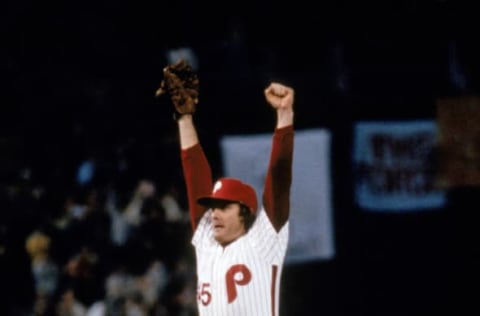
21. Tug McGraw, RHP
Career Stats: 824 G (39 GS), 180 SV, 1,514 2/3 IP, 3.14 ERA, 1.25 WHIP, 9.22 BB%, 17.57 K%
Seemingly more well-known now for his country-singing son, McGraw was a force for two NL East teams, being one of the best relief pitchers in the league for many years in the late 19602 through the early 1980s for the New York Mets and Philadelphia Phillies.
McGraw was one of the Mets when the team was really rough, pitching to a 3.32 ERA over 37 games, 9 of them starts in 1965 in his rookie year. He went to the minor leagues in 1967 due to injury and was remade as a pure reliever, and he was a key to the 1969 World Series champions, winning 9 games over 42 appearances, 4 of them starts, tossing 100 1/3 innings, with 12 saves and a 2.24 ERA.
From 1969-1973, McGraw anchored the Mets bullpen, averaging 105 innings per season with a 2.56 ERA and saving 82 games in that time. However, in 1974, after being used heavily to push the Mets into the 1973 playoffs, McGraw experienced shoulder issues, and the Mets traded him to the Phillies in a deal that many were assuming was the Mets cashing in on the last remnants of McGraw’s value.
Instead, McGraw made his second All-Star team in his first season with the Phillies, and he was a tremendous reliever for them, right up to the 1980 season, when he seemed to find another gear, appearing in 57 games, saving 20, throwing 92 1/3 innings, and allowing just a 1.46 ERA and 0.92 WHIP on the season. He would go on to save 4 games that postseason for the Phillies, including being the guy on the mound for the final out of the 1980 World Series to bring home the first-ever title to the Phillies organization.
McGraw would pitch for 4 more seasons, but the 1980 season was his pinnacle as he finished th in the NL Cy Young vote and also received MVP votes. Unfortunately, McGraw’s accomplishments were not recognized as widely by Hall of Fame voters when he became eligible in 1990, and he received just 1.4% of the vote on his first ballot, falling off future ballots.
Next: 20. Hometown boy makes good
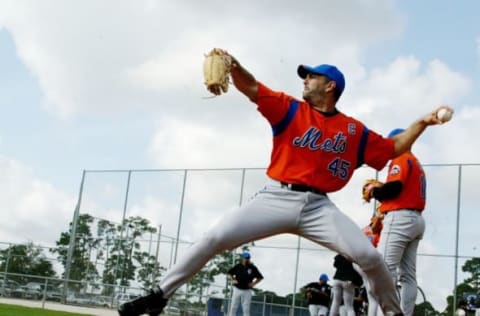
20. John Franco, LHP
Career Stats: 1,119 G, 424 SV, 1,245 2/3 IP, 2.89 ERA, 1.33 WHIP, 9.32 BB%, 18.35 K%
When Brooklyn-born Franco was drafted by the Los Angeles Dodgers in 1981 out of St. John’s, he felt he was fulfilling a lifelong dream to play with his hometown’s former team. Instead, just before reaching the majors, Franco was traded to the Reds, where he was in the majors for the 1984 season as a reliever, tossing 79 1/3 innings of relief at a 2.61 clip. He’d take over as the Reds closer midway through the 1985 season, winning 12 games and saving 12 in 99 innings of relief.
The Reds built their bullpen around their reliable closer, and the “Nasty Boys” bullpen flourished with erratic Rob Dibble and Norm Charlton working alongside the reliable Franco. Unfortunately, Franco was not able to see the prime moment of that bullpen, as the Reds traded him to the Mets before 1990, the season the Reds would win the World Series.
For Franco, there were no hard feelings, however, as he was able to take the mound for his hometown fans as a member of the Mets. He would go on to lead the Mets bullpen as closer for the entire decade of the 1990s, averaging 27 saves per season and pitching to a 2.81 ERA.
Even after Franco lost enough velocity that he was no longer a dominant back end reliever, he was still very effective as a lefty out of the bullpen, pitching until his mid-40s in that role, retiring after a season in Houston in 2005.
Franco made 4 All-Star games, received MVP votes twice, ranked 7th in Cy Young voting in 1994, and he won the NL Rolaids Relief award in 1988 and 1990. When he came up for Hall of Fame voting in 2011, he fell just short of remaining on the ballot for another chance, receiving 4.6% of the vote when he needed 5% to stay on the ballot.
Next: 19. The Count
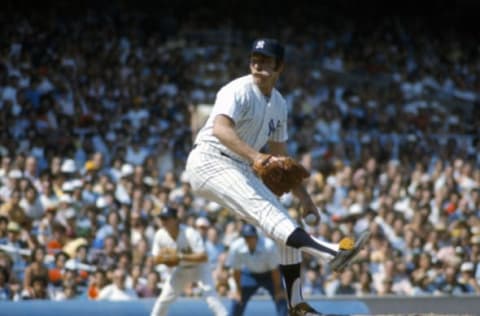
19. Sparky Lyle, LHP
Career Stats: 899 G, 238 SV, 1,390 1/3 IP, 2.88 ERA, 1.28 WHIP, 8.3 BB%, 15.07 K%
A guy who spiked the Red Sox/Yankees debate in the early 1970s when he went from the Red Sox to the Yankees in a 1972 spring training trade. He would later be part of the deal that brought Dave Righetti to the Bronx from Texas.
Lyle was known for his slider, a pitch he attributed to Ted Williams, who taught it to him before the 1966 season. It became part of a four-pitch repertoire that allowed Lyle to be dominant in the back of the bullpen in spite of not having a blazing fastball like many relievers do.
While his demeanor on the mound was all business, in the clubhouse, bullpen, and dugout, Lyle was a notorious prankster that had a reputation for leaving his butt print in birthday cakes left in the clubhouse for his teammates during games. He was also considered a “master” of the “hot foot”.
Lyle became known for his tales of the 1970s Yankees in his book titled The Bronx Zoo, and he’s remarked multiple times about how his book has been received significantly different in the Yankees community than Jim Bouton‘s Ball Four, which nearly kept Bouton out of the Yankee culture for three decades.
Over 16 seasons in the major leagues, Lyle made 3 All-Star Games, won the 1977 AL Cy Young, and appeared in MVP voting four different times. He made four Hall of Fame ballots, but his highest support was in his first year of eligibility, 1988, when he received 13.1% of the vote.
Next: 18. Q
18. Dan Quisenberry, RHP
Career Stats: 674 G, 244 SV, 1,043 1/3 IP, 2.76 ERA, 1.18 WHIP, 3.81 BB%, 8.92 K%
A unique pitcher in the game, Quisenberry popularized the submarine style of pitching with his closing for the Royals in their prime mid-80s seasons. There were other submariners before Quisenberry, but none on such a notable team and with such an amazing mustache!
The Royals signed Q as an undrafted free agent in 1975 out of the University of La Verne in California. He made just one start in his entire minor league career, exploding up the farm system, but the Royals struggled with just how to use their reliever with a unique arm angle, leaving him in AA four different seasons before he finally was promoted to AAA and then made his major league debut in 1979.
Quisenberry made a big impact in his first full major league season, winning 12 games and saving 33 games for the Royals. Surprisingly, he did not receive a single vote for AL Rookie of the Year, but he did get votes for both the AL Cy Young Award and the AL MVP.
From 1982-1985, Quisenberry led the league in saves each season, never posting above a 3.00 ERA with the Royals after his rookie season. While many relievers were used very hard, Q was used exceptionally hard by the Royals, not just pitching plenty of innings, but making plenty of appearances as well, so he was not getting much time off between throwing multiple innings, averaging 68 appearances and 115 innings pitched from 1980-1986, but in four of those seasons, he made at least 72 appearances and in five of those seasons, he threw at least 125 innings, all in relief.
That led to his arm going downhill in a hurry, and he quickly began to struggle with getting the same velocity on his pitches, and as much as Q pounded the strike zone, he began to give up plenty of contact, leading to his retirement in 1990.
Overall, Quisenberry won 5 Rolaids Relief awards in the AL, including 4 in a row from 1982-1985. He made 3 All-Star games, appeared on MVP balloting 5 times, and on Cy Young balloting 5 times, but when his name appeared on Hall of Fame balloting in 1996, he received just 3.8% of the vote and did not get a second shot at the ballot.
Next: 17. Wetty
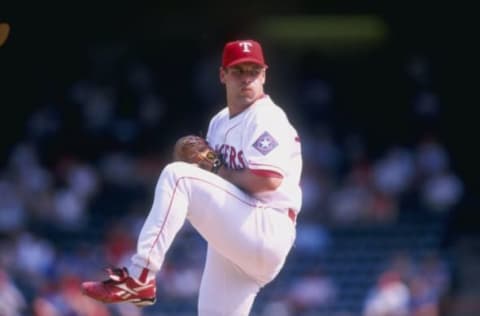
17. John Wetteland, RHP
Career Stats: 618 G (17 GS), 330 SV, 765 IP, 2.93 ERA, 1.14 WHIP, 8.01 BB%, 25.56 K%
Pedro Martinez isn’t the only pitcher who went from the Dodgers to the Expos in the early- to mid-90s and suddenly became a star on the mound. Wetteland went from LA to Montreal via Cincinnati.
The moment he arrived in Montreal, Wetteland was inserted as the team’s closer and took to the role with complete dominance. He saved 105 games with a 2.32 ERA over three seasons, anchoring the bullpen on Expos teams that worked their way to the top of the NL before the Expos started tearing apart the team following the 1994 player’s strike when he was traded to the Yankees.
There are few people who could keep the man who will end up at the top of this list (seriously, that’s not in question, is it?) from the closer role, but Wetteland was that guy for a pair of seasons with the Yankees, leading the league in saves in 1996 with 43 as the Yankees won the World Series.
He then signed as a free agent in 1997 with the Texas Rangers, and he simply kept up his dominant ways, until an injury led to him going unsigned when his contract was up after the 2000 season. He was only 34 at the time.
Wetteland was awarded the Rolaids Relief Man of the decade for the 1990s, though he only won one Rolaids Relief award for a single season in the decade, 1996. He was selected to 3 All-Star games, appeared on one Cy Young Award ballot, garnered votes 4 times for MVP, and he was the 1996 World Series MVP.
When he came due for the Hall of Fame, his quick and abrupt end to his career cost him, as he could only get 0.8% of the vote and left the ballot in his first year on the ballot.
Next: 16. Astros Relief Ace
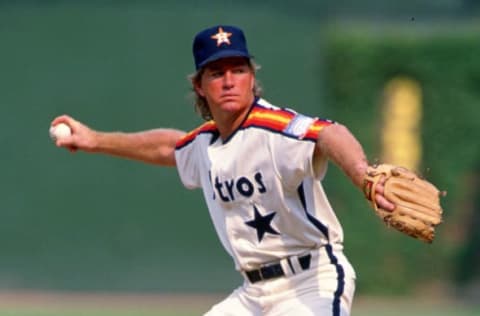
16. Dave Smith, RHP
Career Stats: 609 G (1 GS), 216 SV, 809 1/3 IP, 2.67 ERA, 1.22 WHIP, 8.43 BB%, 16.32 K%
Coming from San Diego State, the Astros selected Smith in the 8th round of the 1976 draft. He had middling success as a starter, taking each level one stop per season, but he blossomed when the Astros moved him into the bullpen out of spring training in 1980.
On one of the most underrated pitching staffs in recent history, Smith was the anchor to the bullpen on a staff led by guys like Mike Scott and Nolan Ryan. While his save numbers were never incredible, he had dominance in his ability to keep runs off the board with incredibly difficult stuff to square up, even if he didn’t blow it by hitters all that often.
Smith put together a run from 1984-1990 where he averaged 64 innings at the back of the bullpen, finishing 41 games per year on average and saving an average of 23 with a 2.35 ERA and 1.11 WHIP through that dominant stretch, becoming the prototype for the late-game closer while everyone focused on another reliever from Oakland for doing the same thing.
Smith made two All-Star teams, garnering votes for MVP once. He was never nominated by the nominating committee to even receive votes for the Hall of Fame in spite of being one of the National League’s best relief pitchers through the decade of the 1980s.
Next: 15. Paps
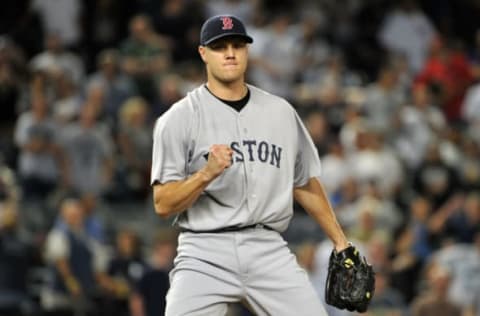
15. Jonathan Papelbon, RHP
Career Stats: 689 G (3 GS), 368 SV, 725 2/3 IP, 2.44 ERA, 1.04 WHIP, 6.3 BB%, 27.5 K%
A 4th round selection out of Mississippi State, Papelbon had developed into a fairly impressive prospect as a starting pitcher, ranking as the #37 prospect in all of baseball after a solid showing in the 2005 season as a swingman in the Red Sox bullpen down the stretch after breezing through both upper minors levels.
Instead, the Red Sox installed Papelbon and his impressive pitch mix into the closer role, and he responded immediately, posting a 0.92 ERA with 35 saves in his rookie season, finishing 2nd to Justin Verlander for American League Rookie of the Year, but still making the All-Star team.
Papelbon would begin his career as a closer with a four-year run that’s nearly unprecedented, as he saved 151 games over his first four seasons, posting a 1.74 ERA, 0.92 WHIP, and striking out 312 hitters over 264 innings. His success prompted a desire to return to the rotation, however, and he began to feud some with Red Sox brass publicly about his role and the opportunity he’d have to ever start again.
That led to him being highly desired in free agency, but not by his previous team, signing eventually with the Philadelphia Phillies for a very hefty contract, guaranteeing him $13 million per season over 4 guaranteed years. He immediately made an impression in Philly as well, garnering an All-Star nod while saving 38 games and posting a 2.44 ERA.
Coming into the final year of his contract, Papelbon had seen his strikeout rate decline significantly, and the Phillies were willing to trade him, even to a division rival in the Washington Nationals. Though Papelbon threw well in his time with the Nationals in 2015, they did not make the playoffs that season. When 2016 rolled around, Papelbon struggled in his closing role, posting his first 4+ ERA of his career before notably getting into a dugout confrontation with Nationals superstar Bryce Harper.
The Nationals released Papelbon following the incident, and he did not get picked up by anyone else.
Papelbon made 6 All-Star games, and he won the 2007 Delivery Man of the Year award.
Next: 14. The Crane
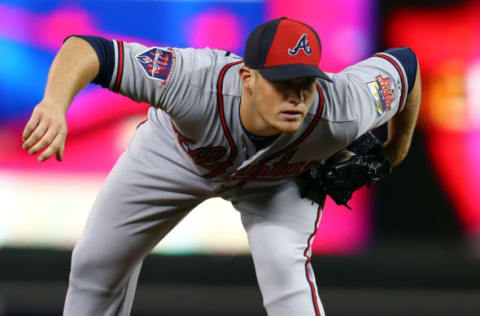
14. Craig Kimbrel, RHP
Career Stats: 513 G, 315 SV, 503 2/3 IP, 1.82 ERA, 0.91 WHIP, 9.51 BB%, 41.74 K%
The Atlanta Braves were certainly into Kimbrel, drafting him in 2007 and 2008, getting him in the 3rd round in 2008 out of community college. He blew through their minor league system, even ranking among the top 100 prospects in all of the game going into the 2011 season.
As Mo was nearing the end of his incredible run with the Yankees, he was really handing off to Kimbrel. The start to his career has absolutely been unmatched, and the incredible thing is that Kimbrel just turned 30 at the end of May, so, barring an injury, he should have at least 4-5 more very good seasons left as he hits free agency this offseason.
The first four seasons for Kimbrel with Atlanta were the stuff of legend, as he led the league all four seasons in saves, posting 185 total saves, with a 1.51 ERA, 0.88 WHIP, and an insane 41.96% strikeout rate.
Kimbrel had some issues with his knee in 2016, but he came back in 2017 with a tremendous performance for the Red Sox. He’s going to likely have a very wide array of options when he hits free agency this winter.
So far, Kimbrel has made 6 All-Star games, won the 2011 NL Rookie of the Year award, won 3 Rolaids Relief Man awards (now renamed for Rivera/Hoffman), received votes for the Cy Young 5 times, and received MVP votes 3 times. Once again, he’s only 30!
Next: 13. Sit Down
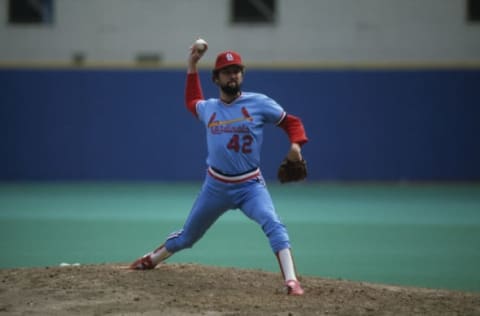
13. Bruce Sutter, RHP
Career Stats: 661 G, 300 SV, 1,042 IP, 2.83 ERA, 1.14 WHIP, 7.27 BB%, 20.25 K%
Okay, so that may not be an official nickname for Sutter, but it sure should be. A bit of a personal story: my grandfather would drive me around in the pickup growing up, listening to AM radio broadcasts, often of Cubs games. He and I enjoyed the broadcasters, who had an affinity for Sutter from his previous time with the Cubs, and each time he’d come into a game against the Cubs, they’d refer to him as “Sit-down Sutter”.
Sutter had been in the game long enough that he was selected originally in the 21st round of the draft by the Washington Senators (2nd iteration). He didn’t sign with the Senators, but he did eventually sign with the Cubs a year later. He toiled in the minors 5 seasons, nearly all as a reliever working his way up the ladder step by step to debut in 1976.
He took over as closer in the 1976 season, and in 1977, he began a run as a closer that was incredible, lasting 8 seasons to 1984 and eclipsing a move to the Cubs’ strongest rival, the St. Louis Cardinals. Over those 8 seasons, Sutter saved 250 games, with a 2.52 ERA, 1.11 WHIP, and made 6 All-Star teams.
Sutter’s split-finger fastball was the stuff of legend, incredibly difficult to square up, and he could throw it in any count to nearly any hitter with effectiveness. However, Sutter’s personal injury history that caused him to retire mid-way through one of the most incredible contracts in baseball history (seriously, more incredible than Bobby Bonilla!) led many pitching coaches to shy away from the split-finger, believing it to cause unneeded stress on the elbow and shoulder.
All 6 of his All-Star appearances happened in his 8-year run, but he also won the 1979 NL Cy Young, appeared in 5 Cy Young ballots, received votes 6 times for MVP, and he won 4 NL Rolaids Relief awards. He was finally voted in on the Hall of Fame ballot in his 13th try in 2006.
Next: 12. Teke
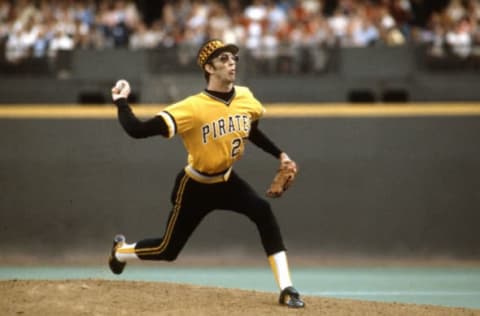
12. Kent Tekulve, RHP
Career Stats: 1,050 G, 184 SV, 1,436 2/3 IP, 2.85 ERA, 1.25 WHIP, 8.18 BB%, 12.98 K%
Instantly recognizable in his yellow-tinted glasses and 1980s Pirates cap, Tekulve was not a closer for a lot of his time in the majors, so his complete dominance was really missed by many. He was originally signed by the Pirates in 1969, and he made his major league debut in 1974, establishing himself in the bullpen in the second half of 1975.
The Pirates used Tekulve plenty, and he led the league in games pitched in 1978 and 1979 in his first two seasons as the Pirates’ official closer, saving 62 games and tossing 269 2/3 innings out of the bullpen.
Tekulve ended up appearaing in at least 70 games 10 times in his career and threw 90 or more relief innings 9 times in his career, yet outside of his final season in the major leagues at 42 years old, he never pitched a full season at higher than a 3.60 ERA. Incredibly, even with a low number of walks, Tekulve had over 1/3 of his walks due to intentional walk, and if you remove those, he was at a walk rate around 5.2% in his career. For perspective, that rate would have been 13th best in 2017 among all qualifiers for a single season, let alone a career rate!
One of the more underrated and difficult to express statistically attributes about Tekulve was his ability to step up in big-time situations. In 1979, he pitched 5 games of the World Series as the “We Are Family” Pirates took home a championship, saving 3 games, and pitching an astounding 9 1/3 innings.
Over his career, he made just one All-Star game. He appeared on 2 MVP ballots and 2 Cy Young ballots in his career. He only received 1.3% of the vote on the 1995 Hall of Fame ballot.
Next: 11. D-3 Conversion
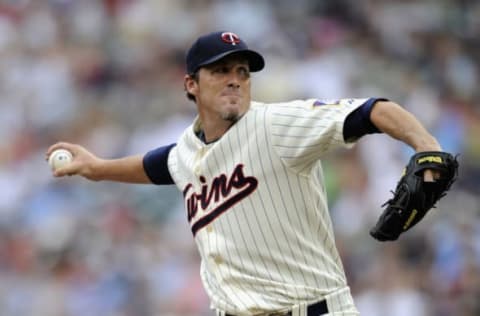
11. Joe Nathan, RHP
Career Stats: 787 G (29 GS), 377 SV, 923 1/3 IP, 2.87 ERA, 1.12 WHIP, 9.12 BB%, 25.88 K%
After not getting a ton of offers out of high school, Nathan chose to stay close to home and attend Division III Stony Brook University, where he’d turn himself into a quality prospect as a shortstop and a pitcher. Nathan preferred to pick ’em at short, but after his bat simply couldn’t handle pro pitching, the Giants moved him to the mound.
Nathan moved quickly up the farm system after that point, and he was an effective starter for two seasons, before Tommy John surgery took away all of his 2001 season and most of his 2002 season. When he returned, he came back as a dominant reliever.
The Minnesota Twins acquired Nathan as part of the infamous AJ Pierzynski trade after the 2003 season. He was immediately plugged in as the closer in the Twin Cities, and he put up a 1.62 ERA and 44 saves in his first season in the role. That started a stretch that, if not for a certain Yankee closer, would have received notice as one of the most dominant stretches by a closer in recent history.
From 2004-2009, Nathan saved 246 games in six seasons for the Twins, with a 1.87 ERA, a 0.93 WHIP, a 7.33% walk rate, and a 31.66% strikeout rate. Unfortunately, he would then miss the entire 2010 with another injury.
Nathan was able to put together two very good seasons in Texas at 37 and 38, but he struggled through a year in Detroit after that, bouncing around for a couple more seasons before retiring.
He made 6 All-Star games, won the 2009 AL Rolaids Relief award, appeared on 2 MVP ballots, and also appeared on 2 Cy Young Award ballots. He will first appear on the Hall of Fame ballot in 2022.
Next: 10. Cooperstown Controversial
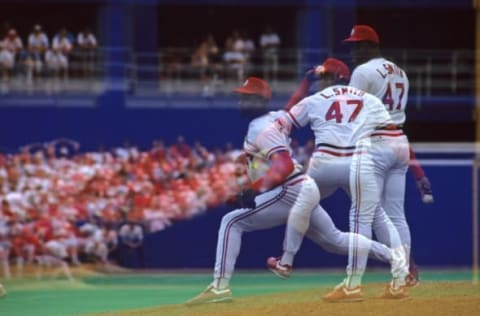
10. Lee Smith, RHP
Career Stats: 1,022 G (6 GS), 478 SV, 1,289 1/3 IP, 3.03 ERA, 1.26 WHIP, 9.02 BB%, 23.22 K%
Really centering the debate about the Hall of Fame and how it should treat the modern closer, and how voters should value the “save” statistic, Smith ended up becoming known for his numbers when he was so much more on the mound.
Standing 6’5″, and weighing in at well over 200 pounds (usually 250+) throughout his career, Smith was incredibly intimidating on the mound from the moment he made his debut in the major leagues in 1980 for the Chicago Cubs.
Smith had the type of stuff that could absolutely dominate hitters on top of his intimidating size. However, he was consistently on poor teams, only getting to pitch in two postseasons in 18 major league seasons.
In spite of being on mediocre to poor teams, Smith was able to lead the league in saves 4 times. However, bouncing around 7 teams over the course of 5 seasons at the end of his career likely shaded his view with many around the game as to his true dominance, even though he led the league in saves in one of those seasons.
Smith was selected to 7 All-Star games, won 3 Rolaids Relief awards, appeared in 4 MVP votes, and was on Cy Young ballots in 4 seasons.
He appeared on Hall of Fame ballots the maximum 15 times, always earning enough votes to stay on the next season, but he only once garnered more than 50% of the vote the entire time he was on the ballot, staying between 29.9% and 50.6%.
Next: 9. Hoff
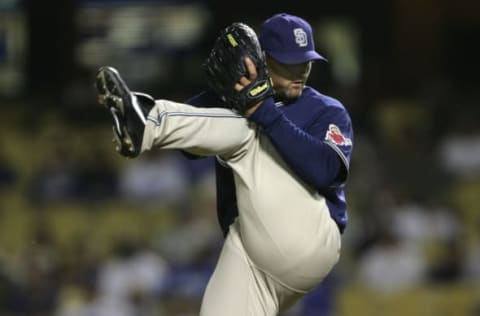
9. Trevor Hoffman, RHP
Career Stats: 1,035 G, 601 SV, 1,089 1/3 IP, 2.87 ERA, 1.06 WHIP, 7 BB%, 25.82 K%
A shortstop when he was selected by the Reds in the 11th round of the 1989 draft out of the University of Arizona, Hoffman struggled through two full seasons at the plate before finally moving to the mound full-time. While he made 11 starts among his 48 appearances in AA/AAA in 1992, when the Marlins selected him in the expansion draft, it was purely as a reliever.
Hoffman didn’t even make it to July 1st of the inaugural Marlins season still wearing the teal, as he was traded June 24th to the San Diego Padres in a deal that brought Gary Sheffield to the new Marlins organization. While Sheffield was an MVP-caliber player, Hoffman would prove to be more than worthy of making that deal a steal for the Padres.
The Padres moved Hoffman into the closer’s role in 1994, and outside of missing the majority of the 2003 season to injury, he would save double-digit games for 17 straight seasons. He did most of that for the Padres, spending 16 seasons with the Padres in total.
Beloved at a level that really only Tony Gwynn surpasses in the San Diego Padres community, Hoffman became known for both his entrance music (“Hells Bells” by AC/DC) and his incredible changeup.
Hoffman made 7 All-Star games, won 2 Rolaids Relief awards, received votes for the Cy Young 4 times, and appeared on the MVP ballot 5 different seasons.
On his 3rd attempt, Hoffman was elected to the Hall of Fame this offseason.
Next: 8. The Tominator
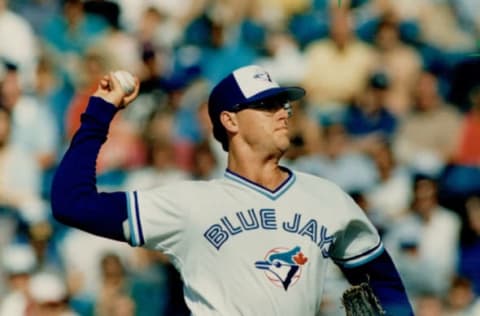
8. Tom Henke, RHP
Career Stats: 642 G, 311 SV, 789 2/3 IP, 2.67 ERA, 1.09 WHIP, 7.98 BB%, 26.96 K%
Standing 6’5″ tall, long and lanky, Tom Henke was a first round selection in January by the Chicago Cubs in the 1980 draft out of East Central College. He returned to school and was selected by the Texas Rangers in the 4th round in June. Henke made short work of the minor leagues, in part because he was moved to the bullpen almost immediately.
In an era when closers were still trying to coax groundballs out of the batters they were facing, Henke used his power fastball and forkball to not only look intimidating on the mound, but also intimidate hitters by striking out a significant amount of them. In that mold, Henke was really the first of the “power” closers that are essentially the norm today.
In a quirk of the collective bargaining agreement at the time, Henke was available to be selected as free agent compensation, and the Toronto Blue Jays did just that in 1985, after Henke already had 41 games under his belt. He took over as closer for the Blue Jays in that first season in Toronto, and he’d hold onto that role for the Blue Jays for 7 more seasons.
In his time in Toronto, Henke pitched to a 2.48 ERA and saved 217 games while striking out 28.72% of hitters (while walking just 7.4% of hitters). However, due to the lack of success for most of his time there, Henke was not known as well as some of the other top relievers of the time.
After a pair of seasons with his original team, the Texas Rangers, where he saved 55 games, but he saw his stuff start to down-tick in velocity, and he had to adjust as he allowed more home runs than he had previously. Though he was tremendous for the Cardinals in 1995 (1.82 ERA, 36 saves) at age 39, Henke chose at that time to retire rather than pursue more seasons of “stacking numbers” that could have made him more attractive to Hall of Fame voters, but really didn’t change the pitcher he was.
One of the highlights of Henke’s career was being able to finally pitch on a team with the talent to get all the way to the World Series, saving 5 games between the ALCS and World Series while pitching 8 innings.
Flying under the radar meant that Henke finished his career with 2 All-Star game selections and just one Rolaids Relief award (in his final season, ironically), and he appeared in 3 MVP votes. He appeared on the Hall of Fame ballot in 2001, and in spite of being one of the best relief pitchers in the entire 1980s, he garnered just 1.2% of the vote, falling off the ballot.
Next: 7. The Stache
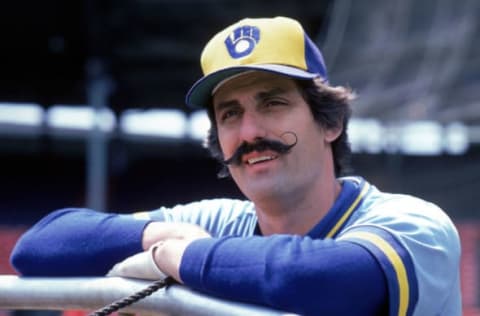
7. Rollie Fingers, RHP
Career Stats: 944 G (37 GS), 341 SV, 1,701 1/3 IP, 2.90 ERA, 1.16 WHIP, 7.09 BB%, 18.71 K%
The Athletics signed a long, lanky pitcher from California in 1965, and he moved quickly as a starter, though he had some issues staying healthy in the rotation at the upper levels of the minor leagues. Rollie Fingers was tried out in the A’s bullpen as a swingman, and it eased his transition to the majors, which would then quickly take off.
In 1971, Fingers moved midseason to the closer role. Starting in that next season, 1972, his first full season as a starter, until 1978, Fingers had a seven year run that was incredible. He led the league in saves twice, in games pitched three times, and he still posted a 2.58 ERA, 1.11 WHIP, and he threw an incredible 123 innings per season on average over those seven years!
An injury-riddled season in 1979 led to rough numbers, but Fingers pitched through it. He would bounce back with three tremendous seasons, pitching to a 2.21 ERA over those three seasons with 80 saves. However, after the 1982 season, he finally succumbed to his injury, missing the entire 1983 season, and while he was brilliant in his 1984, his arm was hurt, and after trying to pitch through it in 1985, he stepped away from the game.
Fingers attempted to pitch through his injuries in 1979 and in his final season of 1985. Incredibly, he was able to toss 139 innings in those two seasons, even quite hurt, but if you take out those two seasons, his career ERA drops 16 full points.
Fingers had the luck of pitching for some very good A’s teams and he was able to show his dominance in the postseason frequently, saving 9 games over 30 appearances in the postseason, with a 2.35 ERA, a 1.17 WHIP, and a 45/17 K/BB ratio. He was the World Series MVP as the A’s defeated the Dodgers in 1974, one of three World Series rings he won.
Over his career, he was selected to 7 All-Star games, winning the 1981 Cy Young and MVP, along with 4 Rolaids Relief awards. He appeared in 4 Cy Young votes and received votes in 7 MVP ballots over his career.
It took two times, but Fingers was elected to the Hall of Fame in 1992 with 81.2% of the vote.
Next: 6. Iron Mike
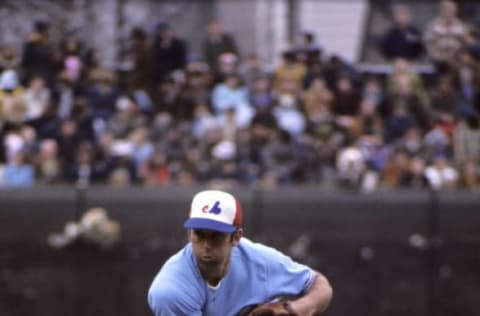
6. Mike Marshall, RHP
Career Stats: 724 G (24 GS), 188 SV, 1,386 2/3 IP, 3.14 ERA, 1.29 WHIP, 8.8 BB%, 15.06 K%
Arguably the smartest man to ever toss a ball, especially when it comes to understanding the “art” of pitching, Marshall was originally signed by the Philadelphia Phillies in 1960 after a collegiate career at Michigan State. This would begin an odyssey that saw Marshall play for 10 organizations at some level, technically 11 as he played for the Seattle Pilots and then moved with the team to Milwaukee. He was traded three times over the course of his career as well.
That vagabond lifestyle was not terribly uncommon for a reliever in the 1960s and 1970s, but it belied the brillians that Marshall was showing on the mound at the time. His methods may have been quirky and unique, but he was able to pitch nearly on a daily basis at times in his career. His run from 1972-1974 with the Expos and Dodgers is brilliant, only to be matched with a tremendous pair of seasons in 1978-1979 with the Twins after many thought his arm was long gone.
In that 1972-1974 run, Marshall did some incredible things for a reliever that have not been equaled. In 1974, he threw in 106 games and tossed 208 1/3 innings, all in relief, an absolutely incredible number to consider in the modern game. Over that three-year period, Marshall averaged 88 games pitched and 168 innings per season, with a sterling 2.36 ERA.
As was the case for many relievers used so heavily in the 1970s, Marshall’s arm did not agree with the heavy usage, and he ended up missing a significant portion of the 1977 season with arm issues. However, his unique training methods allowed him to return to the mound in 1978 for the Twins and over the next two seasons, he would compile 144 games, 241 2/3 innings, 53 saves, and post a 2.57 ERA while doing it.
His arm issues crept up again in 1980, costing him much of the season, and though he threw well in his return to the mound with the Mets in 1981, Marshall’s methods were seen as too quirky for most teams, and he couldn’t find another deal at 39 years old.
Marshall finished his career with 2 All-Star selections, the 1974 Cy YOung Award, 4 appearances on the MVP ballot, and 5 seasons receiving votes for the Cy Young Award. However, when his time for Hall of Fame voting came, writers were persuaded much more by the quirkiness of how he did it than the final result, and he mustered only 1.5% of the vote, falling off future ballots.
Next: 5. Billy the Kid
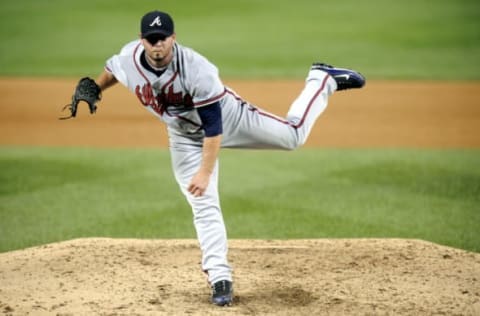
5. Billy Wagner, LHP
Career Stats: 853 G, 422 SV, 903 IP, 2.31 ERA, 1.00 WHIP, 8.33 BB%, 33.22 K%
A broken arm as a young man changed Wagner’s entire life, as Wagner broke his right arm twice as a boy, and he learned to throw with his left arm instead, and he certainly could throw well with that arm, unleashing pitches in the upper 90s and even 100+ in velocity with a hard, wicked slider.
With his small (5’10”) frame and fiery, often confrontational attitude with teammates and front office alike, Wagner did burn some bridges along the way in the game, but his on-field performance was always stellar. Save for an injury season in 2000, he never posted a big league ERA over 3.
Wagner’s career began in Houston, and he began his career as the setup man for the Astros, but there was no denying the lefty his chance to close as he struck out 106 batters in 66 1/3 innings in his second season while taking over the closer’s job full-time.
However, his frustration with not being able to win in the postseason, coupled with the game’s natural tendency away from left-handed relievers being closers led to him being moved to Philadelphia in trade. After two years with the Phillies where he posted a sub-2 ERA and saved 59 games, Wagner was allowed to leave via free agency and went to the New York Mets.
After two years of domination on the mound in Flushing, however, Wagner was injured, missing the end of the 2008 season and much of the 2009 season. As the trade deadline neared, Wagner began to protest that he was ready to pitch, but the Mets were not using him, even threatening to involve the players’ union. This got him traded to Boston, where he sported an impressive finish to the 2009 season.
The Atlanta Braves signed Wagner before the 2010 season, and many were unsure what he’d be able to offer due to his health, but Wagner turned in possibly his best season of his career at 38 years old, pitching to a 1.43 ERA over 71 appearances, saving 37 games, and striking out 104 while walking just 22.
Though the Braves were more than willing to bring Wagner back for the 2011 season, he chose to let 2010 be his final hurrah on the diamond, retiring to coach high school ball and spend time with his family.
Wagner was selected to 7 All-Star games, won the 1999 NL Rolaids Relief award, appeared on 2 MVP ballots, picked up votes in 2 Cy Young Award ballots, and he’s still tops among the best relief pitchers in the history of the game with his 33%+ strikeout rate (for those with over 600 innings). He’s unfortunately not received the Hall of Fame notice that his dominant career truly deserves, sitting around 10% on the ballot in his first three tries.
Next: 4. Goose
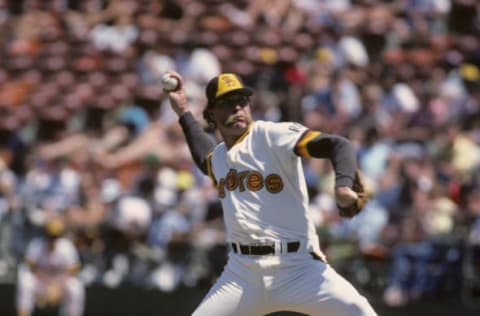
4. Rich Gossage, RHP
Career Stats: 1,002 G (37 GS), 310 SV, 1,809 1/3 IP, 3.01 ERA, 1.23 WHIP, 9.75 BB%, 20 K%
With his thick mustache often leading down to thick mutton chop side burns, Gossage made his burly build look even more intimidating on the mound, and with his fierce response to the goings-on of the game, he would strike fear in hitters’ hearts for years on the mound.
The Chicago White Sox originally drafted Gossage in the 9th round of the 1970 draft, and he moved quickly through their system, making it to the majors in 1972 for 80 innings of long relief. He was dominant in the bullpen, and he was even able to elicit an All-Star nod in his one season in the rotation with the White Sox in 1976, though he ended up losing 17 games on the season.
With one season before he hit free agency, the White Sox traded Gossage to the Pittsburgh Pirates, where he was dominant in 1977, with a 1.62 ERA and 26 saves over 133 innings of relief, striking out 151 batters.
He’d take advantage of the new abilities of players to explore free agency to join the New York Yankees after the 1977 season, and it’s with the Yankees that many remember Gossage. He pitched in the Bronx for 7 seasons, winning 42 games and saving 151 games as a reliever, posting a 2.14 ERA and striking out 512 over 533 innings in pinstripes.
His next encounter with free agency landed him in San Diego. He was solid in the 1984-1985 seasons for the Padres, but he began to see his velocity, and therefore his effectiveness, fall off after the 1985 season. He pitched parts of 7 more seasons with 7 different teams, retiring after the 1994 season.
Gossage was selected to 9 All-Star games, won the 1978 Rolaids Relief award for the AL, appeared on 5 MVP ballots, and received votes in 5 Cy Young Award ballots. After 8 failed attempts to earn entry to Cooperstown, Gossage was elected to the Hall of Fame in 2008 with over 85% of the vote.
Next: 3. Old Boss
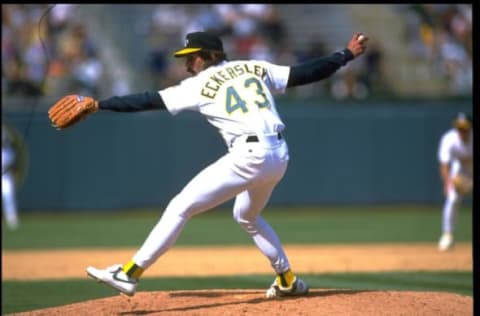
3. Dennis Eckersley, RHP
Career Stats: 1,071 G (361 GS), 390 SV, 3,285 2/3 IP, 3.50 ERA, 1.16 WHIP, 5.45 BB%, 17.74 K%
Eckersley was one of the innovators of the relief position, considered one of the first one-inning relievers. Of course, he was a very good starter before he made the move to the bullpen.
Eckersley pitched from 1975 to 1986 as a starter in the major leagues with Cleveland, Boston, and the Cubs. During that time, he won 151 games, tossed just short of 2,500 innings, and had a 3.67 ERA and a 1.21 WHIP. He received Cy Young votes twice, finishing as high as 4th.
However, we’re here to talk about relief pitchers, so we’re going to discuss Eck’s time as a reliever. Tony LaRussa saw his closer for his bullpen design in Eckersley for Oakland in 1987, and he gave Eck a second career that took him to age 43 still throwing very well.
While his numbers above reflect his entire career, his numbers after 1987 are more what would be relevant here, when he pitched in 695 games, tossing 789 2/3 innings, saving 387 games with a 2.96 ERA, 1.00 WHIP, and an incredible 6.79 K/BB rate with a 3.64% walk rate and a 24.68% strikeout rate as a reliever.
What’s most incredible is the run that Eckersley went on with the Athletics from 1988-1992, when he posted a 1.90 ERA over 359 2/3 innings with 220 saves, a 0.79 WHIP, and an incredible 378/38 K/BB rate, averaging just 8 walks per season over that 5-year stretch.
As a reliever, Eckersley made 4 All-Star games, won the 1992 American League MVP and Cy Young Award, won two AL Rolaids Relief awards, was the 1988 ALCS MVP, received MVP votes in four seasons, and received Cy Young votes in four years. He was elected to the Hall of Fame on his first ballot in 2004.
Next: 2. Old Sarge
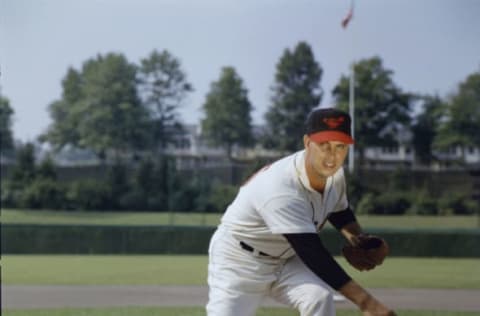
2. Hoyt Wilhelm, RHP
Career Stats: 1,070 G (52 GS), 228 SV, 2,254 1/3 IP, 2.52 ERA, 1.13 WHIP, 8.49 BB%, 17.57 K%
When looking at a guy who had a 20-year career in the major leagues and tossed over 2,000 innings, primarily in relief, it’s incredible to think that player didn’t even get his start in the league until 29 years old, but that’s the case with Wilhelm, who was just 3 months short of 30 years old when he made his major league debut in 1952. He would float his knuckleball out of the bullpen for the next two decades, outlasting a whole generation of star players.
Wilhelm’s debut was far enough into the past that he debuted for the New York Giants, yet by the time he retired, the league had expanded to divisional play and was on the cusp of free agency for players. Through it all, the knuckler remained, from his first year with the Giants, when he tossed 159 1/3 innings over 71 games in relief, winning 15 and saving 11 with a 2.43 ERA to his final season, when he was able to give the now-Los Angeles Dodgers 25 1/3 innings at 49 years of age.
Wilhelm really was best known for his incredible work in the 1960s. Over the decade, he posted a 2.16 ERA and 0.99 WHIP, averaging 56 appearances and 110 innings pitched each season with 15 saves for the Orioles and White Sox primarily, spending the 1969 season between the Angels and Braves.
Because the White Sox utilized multiple quality relievers in the 1960s, Wilhelm never led the league in saves, but he tallied 20+ saves 3 times in an era when even reaching 20 was a rarity. Unfortunately, he only was able to make one postseason, in 1954, but he did come away with a ring from that experience, tossing 2 1/3 scoreless innings and recording a save as the Giants won the Series.
Over his career, Wilhelm was selected to 8 All-Star games, and he appeared on 4 MVP ballots, but it still took voters 8 times to elect him to the Hall of Fame in 1985.
Next: 1. The Sandman
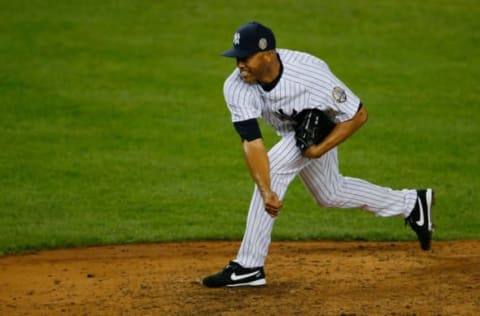
1. Mariano Rivera, RHPO
Career Stats: 1,115 G (10 GS), 652 SV, 1,283 2/3 IP, 2.21 ERA, 1.00 WHIP, 5.6 BB%, 22.99 K%
Signed out of Panama in 1990, Rivera made his way up the Yankees farm system with some inkling of what was to come. He had solid stats all the way up the minor league chain until he got to AAA his first go-round, and then he had the same experience when used primarily as a swingman in 1995 with the Yankees.
Before the 1996 season, Mo reportedly learned his legendary cutter, and the rest is history. He spent that season as the primary setup man in the bullpen, striking out 130 in 107 2/3 innings of relief work. His performance not only allowed the Yankees to allow John Wetteland to walk in free agency, but also to trade the young pitcher who had been their “closer in waiting” for a few seasons in Bob Wickman to the Milwaukee Brewers for pieces that would come in handy during their playoff run of 1996.
More from Call to the Pen
- Philadelphia Phillies, ready for a stretch run, bomb St. Louis Cardinals
- Philadelphia Phillies: The 4 players on the franchise’s Mount Rushmore
- Boston Red Sox fans should be upset over Mookie Betts’ comment
- Analyzing the Boston Red Sox trade for Dave Henderson and Spike Owen
- 2023 MLB postseason likely to have a strange look without Yankees, Red Sox, Cardinals
Just as the Yankees used the 1996 season to spring into one of the strongest dynasties of recent memory, Rivera used the season to jump into what would be the most dominant performance by a pitcher, starter or relief, arguably in the history of the game, absolutely cementing himself as the top of the best relief pitchers of all time.
He used that success of the Yankees to show off his dominance in the postseason with plenty of opportunities, pitching 96 postseason games and saving 42 postseason games with an incredible 0.70 ERA and 0.76 WHIP.
Rivera would have one “bad” season when he posted a 3.15 ERA in 2007 (though he still saved 30 games), otherwise, he posted no season above a 2.85 ERA for the next 17 seasons. He finished with a sub-2 ERA an incredible 11 times in his career. Even at 43 years of age in 2013, he saved 43 games with a 2.11 ERA in his final year in the league.
Rivera was selected to 13 All-Star games, winning the All-Star MVP in 2013. He won 5 Rolaids Relief awards. He won the 2003 ALCS MVP and the 1999 World Series MVP. While he likely deserved more consideration over his career, he did appear on 6 Cy Young voting results, and he received votes for MVP 9 different seasons. He should be a shoo-in for the Hall of Fame.
That is our view on the 25 best relief pitchers in MLB history. Who is too high? Who is too low? Who is omitted altogether? Tell us in the comments!